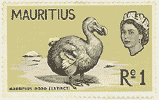
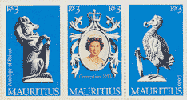
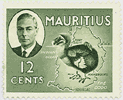

"Although the Dodo has been dead for over three centuries it is still an icon to Mauritians, who consider the bird as part of their historical identity.” ( Sir Satcam Boolell, 2001)
Hundreds of Rare Dodo Bones Discovered
LEIDEN, The Netherlands, December 23 2005 /PRNewswire/
On Friday, October 28, 2005, a Dutch-Mauritian research team discovered the
very first intact layer of bones and botanical materials, including Dodo remains.
The material's age is estimated at 2000 to 3000 years. This new find will allow
for the first scientific research into and reconstruction of the world in which
the Dodo (Raphus cucullatus) lived, before western man landed on Mauritius and
wiped out the species.
The research team consists of Dutch scientists Kenneth F. Rijsdijk (geologist,
TNO), Frans P.M. Bunnik (paleobotanist, TNO), and Pieter Floore (archeologist,
Hollandia), Alan Grihault (a local dodo expert), and Christian Foo Kune, manager
of the "Mon Trésor et Mon Desert" (MTMD) sugar cane plantation,
which owns the area where the discovery was made. Julian Hume, a British palaeontologist,
who is also a member of the research team, was able to more closely determine
the bones' age and origin.
The fossil material was excavated in an area of Mauritius called "Mare
aux Songes", a low-lying swamp area in the dry southeastern part of the
Island, on land owned by MTMD. So far, approximately 80 sq. feet have been excavated
and more than 700 bones have been recovered. All the bones were found in one
layer, and, therefore suggest a mass grave. The discovery yielded several Dodo
bones, including remains of Dodo chicks and a very rare part of the bird's beak,
only a few of which are known to exist in the entire world. In addition to the
dodo remains, the find included bones of various other extinct bird species,
indigenous giant tortoise species, and a baby giant tortoise, as well as a large
number of seeds and remains of (partly) extinct trees and plants. The location
of all bones in a single layer leads scientists to believe this is a mass grave.
Although some Dodo bones were found in the 19th century in the Mare aux Songes,
the site's geology and ecology have never been researched. This type of study
is necessary to reconstruct the area's landscape, wildlife, and vegetation and
to determine whether the animals may have perished en masse due to a natural
disaster. In addition, it will enable scientists to research how such a massive
collection of bones, seeds, and wood ended up in the swamp and how it has remained
so well preserved. Since Dodo bones were discovered here in 1920, there have
been no subsequent finds. Thanks to geological research, this mass grave was
found. Julian Hume recently re-examined the material already found in the Mare
aux Songes, and discovered some bones of Dodo chicks as well. In case of future
research on this site, the research team expects to discover some more remains
of Dodo chicks.
In order to allow for an accurate, systematic study of the site, an international
team is being assembled. The study will be performed by local (botanical) specialists
from Mauritius in close cooperation with leading European institutes including
the National
Natural History Museum Naturalis from Leiden (The Netherlands), the Natural
History Museum, London and TNO's Geological Survey of the Netherlands.
Go to "Dodo Research Programme" page for further details.
The “Last resting place of the Dodo!”
The status of many of the small off-shore islands in Mauritius has been given
a boost over the last few years as it has become popular to believe that one
of these islands may have been the last resting place of the very last Dodo
before its extinction. As water levels have changed over the years, Dodos may
have found themselves marooned on particular islands, where there were no predators,
and therefore protecting themselves against the final blow of extinction.
One of the islands being promoted as a likely contender for the last Dodo, is Isle aux Aigrettes Nature Reserve which is managed by the Mauritian Wildlife Foundation, and harbours the only surviving area of coastal ebony forest; once the true home of the Dodo.
Postal Stamps Museum




“Everywhere on the island, you will see the sign
of the Dodo. Even though the creature died out in the 17th Century, it still
appears on stamps and brochures everywhere as the island’s emblem”.
(Chris Tarrant, 2000)
The Dodo in "Alice in Wonderland"
The most famous, and possibly earliest, book to mention the Dodo is probably "Alice in Wonderland" (1865). It was created by the Reverend Charles Dodgson who wrote under the name of Lewis Carroll. He made the story up to entertain the young daughters of a friend. In this book the main character, Alice, meets many strange people and creatures, including the Dodo. The author had seen a painting of the Dodo by the artist Johannes Savery (1651), in Oxford University Museum of Natural History, England, which probably inspired him.
Dodo Logos
Although the total wipe-out of the dinosaurs over 70,000,000 years ago must
have been the most dramatic extinction ever, the Dodo is the reigning symbol
of extinction. Depicted as a harmless and friendly victim of men’s indifference,
it has become the emblem for various environmental organisations supporting
the plight of endangered animals.
The Dodo is used for a variety of logos in Mauritius, including the Mauritius Coat of Arms, and other organisations:
The Commercial Dodo
In the commercial world, the Dodo is very much alive, and can be found carved
in wood, cast in metal, made into soft toys, and depicted on paintings and
postcards. These various forms are sold all over the island in shops, market
and roadside stalls, art galleries and factory outlets.
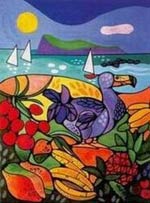
Dodo by Vaco (modern)
Cyber Dodo
Place the word “Dodo” on any of the search engines on the Internet,
and one is faced with up to half a million sites, but only a fraction of these
actually refer to the real Dodo. As the Cyber Web is world wide (WWW), the
references to the Dodo are found from all countries and in all languages.
In sifting through these sites, one realises just how popular the Dodo has
become since its demise so many years ago.

The rare Mauritian Kestrel
Painting by K. Latimer
Mauritian Artists
There are now artists, like Vaco Baissac, painting their vision of the Dodo.
Protecting birds in Mauritius
The demise of the Dodo has prompted the Government of Mauritius to wisely
appreciate the fact that it is very necessary to preserve the natural habitat,
and to protect the bird life that can so easily disappear.
Mauritius can still boast that it has three of the world’s most threatened birds; the Mauritius Kestrel, the Mauritius Parakeet, and the Mauritius Pink Pigeon. A variety of organisations are now working hard to preserve the rare birds on Mauritius.
Protecting the forests in Mauritius
In certain areas of Mauritius it has been necessary to fence off small parcels
of forest land to keep out the wild pigs, deer and monkeys.
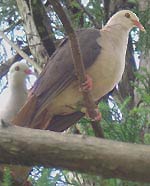
The rare Mauritian
Pink Pigeon
The Tourists view of the Dodo
One of the main projects for the future is to upgrade the historic Dodo site
at Mare aux Songes. At present this is under the guardianship of Mon Trésor
Sugar Estate, who do their best to make sure the area is kept clean and tidy.
The guardians of dodosite.com are doing their best to encourage the development
of the Mare aux Songes site which would include a Dodo Information Centre and
Museum, a protected area for birds and other animals, and the Mare aux Songes
Dodo Experience.
The Solitaire today
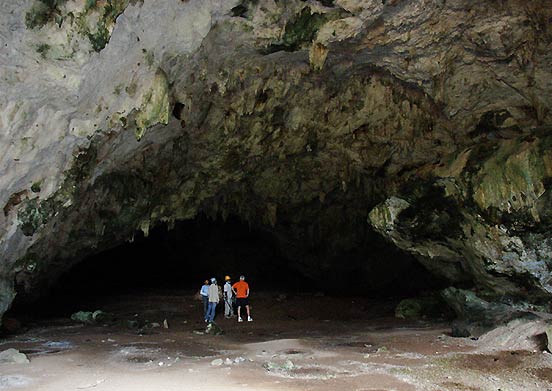
Looking for Solitaire remains in Rodrigues
After the demise of the Solitaire it was largely forgotten, but scientists and ornithologists have gradually pieced together enough material evidence to enable us to have a fair idea of its appearance and lifestyle. Great efforts are now being made to protect the rich biodiversity of Rodrigues, and it is hoped that residents and visitors alike can benefit from the rich inheritance that the Solitaire has left on the island.
Local sites, initiatives and organisations
The Grande Montagne Museum
This small museum makes a good starting place for those who want to find out
more about the Solitaire. Here visitors can see:
• An almost complete skeleton of the Solitaire from the bones collected
from the Caverne Poule
Rouge in the year 2000, and various Solitaire pictures.
Grande Montagne and Anse Quitor Nature Reserves
These nature reserves are actively involved in conservation work, funded by
WWF, which began in Rodrigues in 1985. Several areas in the upland Grande Montagne
and lowland Anse Quitor reserves were weeded and planted with native trees.
This work was undertaken in collaboration with the Ministry for Rodrigues Forestry
Service. The focus was on rare plant conservation and the planting of native
trees.
There are other nature reserves on Île Cocos and Île aux Sables,
off the north-west coast of Rodrigues.
Whilst walking around the various nature reserves and sites in Rodrigues visitors
may be interested in the birds and animals that still inhabit the island.
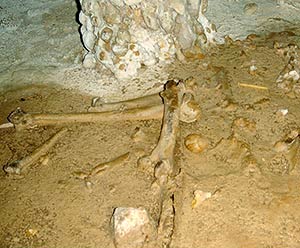
Solitaire bons found in a cave in Rodrigues
François Leguat Giant Tortoise and Cave Reserve
This project has reintroducing the Giant Land Tortoises to Rodrigues. The project
has three main objectives:
• To establish a wild population of Giant Land Tortoises on Rodrigues.
• To recreate the endemic and indigenous forest.
• To protect the rare biotype of the limestone region, including the caves,
which
are rich in sub-fossils of the extinct original fauna.
The site covers an area of 18 hectares and is situated on the limestone plain in the south-west of the island. It is hoped that, within the next few years, the island that Francois Leguat described will become a reality on this site. Through the setting up of three museums, visitors will have the opportunity to learn more about the extinct fauna of Rodrigues. The site includes the Grande Caverne, which is where eminent naturalists dug for Solitaire bones over 130 years ago.
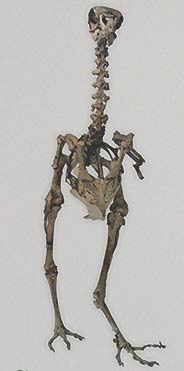
Solitaire skeleton
Solitaire Remains
There are a few places on the island where Solitaire remains can be viewed:
• Grande Montagne Museum
• Mauritian Wildlife Foundation, Forestry Quarters, Solitude.
• François Leguat Tortoise and Caves Reserve, Plaine Corail.
Caves
Rodrigues is fortunate in having many interesting caves, but the most accessible
are Caverne Patate and the Grande Caverne on the site of the François
Leguat Tortoise and Caves Reserve, Plaine Corail.
The Mauritian Wildlife Foundation
The Mauritian Wildlife Foundation is dedicated to saving the country’s
endangered wildlife from extinction. With this self-imposed challenge it is
one of the leading forces in Rodrigues for the preservation of plants and animals.
Visitors can drive through an avenue of trees to find out more at the Forestry
Quarters, Solitude.
Mauritius Tourist Promotion Authority
The Mauritius Tourist Promotion Authority is active in promoting their unique
island of Rodrigues. In fact, it has become so popular with visitors that offices
have been opened at the Residence in the centre of Port Mathurin. (if we could
put this with the eco-tourism bit it would be better, as we seem to be getting
way off the point of conservation/history of solitaire etc)
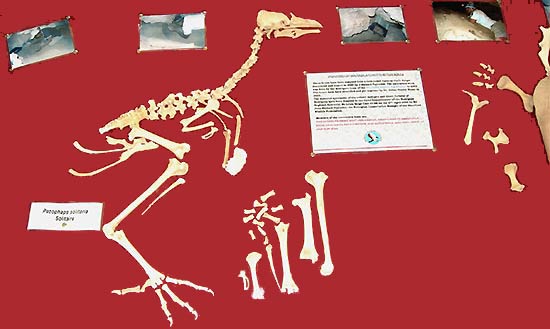
Skeleton of Solitaire displayed in museum, Rodrigues